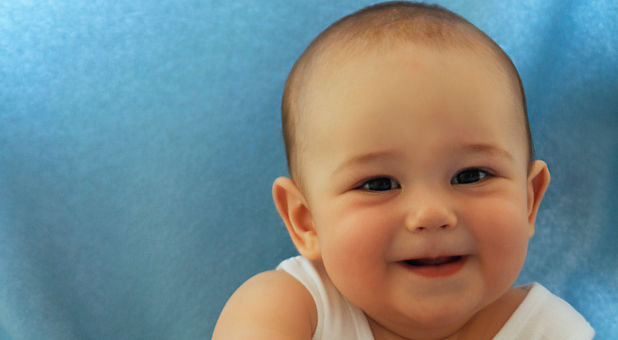FDA Weighs Evidence on Producing 3-Parent Designer Babies
U.S. medical advisers are considering whether there is scientific justification for allowing human studies of a controversial procedure known as “three-parent in vitro fertilization (IVF),” a technique supporters say could prevent horrific genetic defects but that critics believe could lead to designer babies.
During two days of public hearings starting on Tuesday, scientists were scheduled to present their research to outside advisers to the U.S. Food and Drug Administration. The agency will decide whether safety concerns raised by three-parent IVF are minimal enough to allow clinical trials to begin.
The committee is focusing only on the science, and at the end of Tuesday’s hearing some committee members expressed concern that animal research cannot yet show that human studies would be safe for women and any children born via the three-parent technique.
Several panelists felt “there was probably not enough data in animals … to move on to human trials without answering a few additional questions” about safety, said committee chairman Dr. Evan Snyder of the Sanford/Burnham Medical Research Institute in La Jolla, California, in summarizing their views at the end of Tuesday’s session.
Although the panel has not been asked to consider legal or ethical issues, members of the public focused on those. Speakers warned the panel that use of three-parent IVF “could alter the human species,” represented “an unprecedented level of experimentation on non-consenting human subjects” (meaning any children born via the technique), and “could open the door to genetically modified children” who would be “manufactured products.”
In the three-parent procedure, one man would donate sperm and all its DNA for in-vitro fertilization. The would-be biological mother would contribute the egg and most of its DNA. But if the mother carries harmful genetic mutations in cellular structures called mitochondria, scientists would remove her unhealthy mitochondria and substitute those of a second woman so the baby would not inherit a potentially devastating “mitochondrial disease.”
Allowing such procedures “would produce genetically modified human beings,” Marcy Darnovsky, executive director of the Berkeley, California-based Center for Genetics and Society, a nonprofit that focuses on genetic and reproductive technologies, told the committee.
If the FDA allows clinical trials, she warned, it would introduce “a regime of high-tech consumer eugenics” and represent “the first time a government body had okayed genetic changes for humans and their descendants.”
Although the FDA committee is considering only scientific issues, such as whether animal research can show mitochondrial manipulation is safe or not, the agency said it is prepared to go beyond that.
“We have heard the concerns expressed at the advisory committee meeting, and will take the information back to consider whether we need to facilitate a public discussion and, if so, how best to do this,” spokeswoman Jen Rodriguez told Reuters.
Preventing Disease
Some human eggs contain mutations in little-known genes inside mitochondria, which are structures that produce energy, fight viruses and perform other crucial functions in all cells.
Scientists have identified about 700 mutations in mitochondrial DNA that cause what Dr. Salvatore DiMauro of Columbia University described to the FDA panel as “a Pandora’s box of diseases,” including recurrent strokes, seizures, blindness, deafness, diabetes, and a brain-destroying illness called necrotizing encephalopathy.
Mitochondrial disease cannot be diagnosed prenatally, DiMauro said. In the United States, biologist Shoukhrat Mitalipov of Oregon Health and Science University told the committee that up to 4,000 children per year are born with inherited mitochondrial mutations. Mitochondrial diseases, he added, are incurable.
That has spurred research on how to strip out mitochondria with genetic mutations and replace them with healthy mitochondria.
One technique, pioneered at Newcastle University in England, starts with a fertilized egg whose mitochondria contain mutations. Scientists remove the embryo-to-be’s genome, also called nuclear DNA. This DNA is then injected into an egg from a second woman whose mitochondrial DNA is healthy and whose own nuclear DNA has been removed. Result: a fertilized egg with healthy mitochondria and its parents’ nuclear DNA.
Another technique, called maternal spindle transfer, starts with an unfertilized egg from a woman with mitochondrial mutations, explained Oregon’s Mitalipov, who has used the technique in monkeys and said it is ready for human trials. The egg’s genome is removed and injected into a healthy egg whose own genome has been removed. The egg, with standard DNA from the mother-to-be and mitochondrial DNA from the egg donor, is then fertilized with the would-be father’s sperm.
Last year, British health authorities announced that they would draft regulations for three-parent assisted reproduction. The regulations have yet to be issued and would require the consent of Parliament to be implemented.
Although some opponents of mitochondrial manipulation raise the specter of genetic engineering, replacing mutation-filled mitochondria with healthy ones would not be genetic engineering in the usual understanding of the term. It would not make a child smarter, more athletic, more attractive, or otherwise different from what his genome and environment would otherwise produce.
The phrase “designer babies conjures up the wrong message,” panel member John Gearhart, a stem-cell scientist at the University of Pennsylvania School of Medicine, said in discussing media coverage of the issue. “That leads to a complete misunderstanding on the part of the public of what this is all about.”
The FDA has authority over any clinical trials of mitochondrial manipulation as part of its mandate to protect human research subjects, which in this case includes women and any children born from the procedure.
For over a decade, the FDA has forbidden production of three-parent embryos in humans without its explicit permission. In 2001, researchers combined ingredients from healthy eggs with the eggs of infertile women and fertilized the merged ova with sperm. Just over a dozen live births resulted, but since then under the FDA ban U.S. scientists have used the techniques only on mice, monkeys, cows and other animals.
Reporting by Sharon Begley; Editing by Michele Gershberg, Andre Grenon and Ken Wills
© 2014 Thomson Reuters. All rights reserved.







































